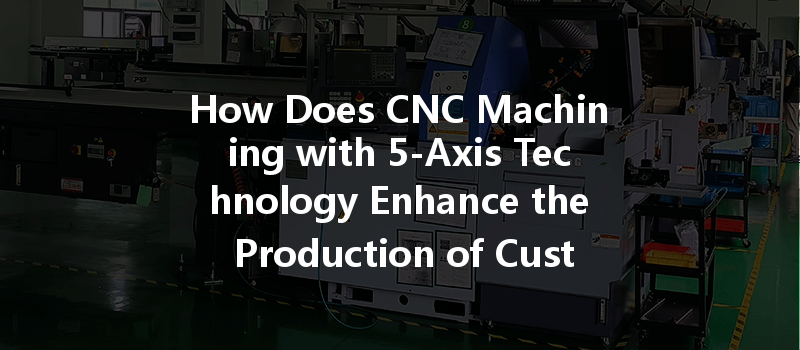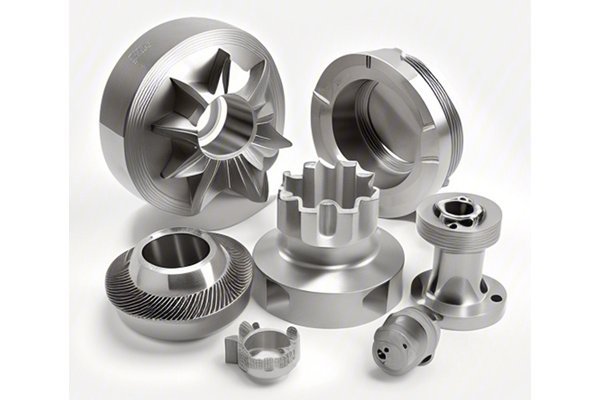: The Dawn of Precision Manufacturing
Did you know that the global CNC machining market is projected to reach a staggering $117.89 billion by 2026, growing at a compound annual growth rate (CAGR) of 6.02% from 2019? In a world where precision and customization are paramount, the rise of Computer Numerical Control (CNC) machining has revolutionized manufacturing processes across multiple industries. Among the various advancements within this realm, 5-axis CNC machining stands out as a pinnacle of technological innovation. But what exactly is 5-axis CNC machining, and how does it enhance the production of custom shapes?
This blog aims to provide an exhaustive exploration of 5-axis CNC machining, delving into its unique advantages, the intricacies of its operation, and its transformative potential for customized manufacturing. Whether you’re a seasoned professional in the field or simply an industry enthusiast, you will gain insightful knowledge about why 5-axis machining is a game-changer for custom-shaped components.
Understanding the Basics of CNC Machining
What is CNC Machining?
CNC machining refers to a manufacturing process that utilizes computer-controlled machines to create complex parts and components. The machine tools are programmed with a specific set of instructions, and they automatically execute tasks such as cutting, drilling, milling, and engraving. Traditionally, CNC machines operated with three axes: the X (horizontal), Y (vertical), and Z (depth). However, as the demand for precision and complexity has increased, the need for more advanced systems led to the development of 4 and 5-axis CNC machining.
The Evolution to 5 Axis
4-axis machining adds a rotation around the X-axis, enhancing the machine’s ability to manipulate the part during the cutting process. On the other hand, 5-axis machining introduces two additional rotational axes, offering unparalleled control over the tool’s orientation. This means that complex geometries can be achieved with multiple facets and details that would typically be impossible or extraordinarily challenging to create with traditional machining methods.
The Unique Benefits of 5-Axis CNC Machining
One of the primary advantages of 5-axis CNC machining is its ability to produce parts with extreme accuracy. By allowing the tool to approach the material from various angles, 5-axis systems minimize the need for tool reconfiguration, reducing the chances of human error. This is especially beneficial for industries such as aerospace and medical devices, where precision is critical.
5-axis machining significantly reduces the time needed to create complex parts. Traditional methods often require multiple setups and part repositioning, which can increase production times and costs. With 5-axis CNC machining, entire components can be manufactured in a single setup, drastically improving turnaround time. This efficiency is vital for companies looking to remain competitive in fast-paced markets.
The design possibilities with 5-axis machining are virtually limitless. It allows for the creation of intricate components that may include undercuts, complex curves, and other features ranging from the simplest to the most complicated shapes. Manufacturers can produce custom shapes tailored to specific applications, whether for automotive, aerospace, or custom tooling industries.
5-axis machining provides a better surface finish due to the reduced number of tool paths and the consistent orientation of the cutting tool. As a result, customers often receive higher-quality components with less need for additional finishing work, saving both time and resources.
Another significant benefit is the enhanced material utilization that 5-axis machining provides. Since it requires fewer setups and reduces the need for extensive tooling, manufacturers can minimize waste and optimize the use of materials. This not only lowers costs but also aligns with sustainability efforts by reducing environmental impact.
Key Applications of 5-Axis CNC Machining
Aerospace Industry
In the aerospace sector, 5-axis machining is indispensable. Components such as turbine blades, brackets, and various structural elements require intricate geometries and high tolerances. The ability to create such complex shapes efficiently ensures that aircraft are lightweight and aerodynamically optimized.
Medical Devices
The medical technology industry also benefits tremendously from 5-axis CNC machining. Customized implants, prosthetics, and surgical instruments often necessitate high precision and a tailored fit. By leveraging 5-axis machining, manufacturers can create components that conform perfectly to individual patient needs without sacrificing precision.
Automotive Manufacturing
With the automotive industry constantly evolving toward more sophisticated designs and technologies, 5-axis machining plays a pivotal role in producing custom-shaped parts. Whether designing intricate engine components or prototyping parts for electric vehicles, 5-axis machines deliver the flexibility and precision required in modern automotive manufacturing.
Consumer Products
From electronic casings to custom furniture components, the consumer products sector also benefits from 5-axis machining. This technology enables manufacturers to produce aesthetically pleasing and functional designs that meet diverse customer demands while maintaining high quality.
Exploring the Operational Mechanics of 5-Axis CNC Machining
The Machine Components
Understanding how 5-axis CNC machines operate can be intricate. At the core, the systems consist of:

Programming and Setup
Programming a 5-axis CNC machine may require additional sophistication compared to 3-axis systems. Modern CAM (Computer Aided Manufacturing) software plays a significant role in simplifying the programming process.
Operational Considerations
While 5-axis machining offers numerous advantages, it’s important to consider factors such as:
Challenges Faced in 5-Axis Machining
While 5-axis machining is beneficial, it can be complex to set up and operate. Operators require extensive training and expertise to ensure that machines are calibrated correctly and that designs are executed flawlessly.
Investing in 5-axis CNC machines can be considerably expensive compared to traditional 3-axis systems. However, the long-term savings from reduced setup times and higher efficiency can outweigh the initial costs.
As operational complexity increases, so does the demand for skilled individuals proficient in CAD/CAM software. Companies must invest in training or hire skilled professionals to maximize the benefits of 5-axis technology.
The Future of 5-Axis CNC Machining
With the rapid advancement of technology, the future of 5-axis CNC machining looks exceptionally promising. The integration of smart technologies such as AI and machine learning will pave the way for even more sophisticated automation and monitoring systems. This will lead to increased efficiency, higher precision, and new possibilities in custom manufacturing.
Emerging Trends
: Embracing Innovation for Custom Solutions
In conclusion, 5-axis CNC machining stands as a groundbreaking advancement in the sphere of manufacturing. Its benefits—including enhanced precision, time efficiency, flexibility, superior surface finish, and better material utilization—are transforming the way custom shapes are produced across various industries. While challenges exist, the potential of 5-axis machining to address the complexities of modern design and fabrication makes it a cornerstone technology for the future.
As we continue to navigate a world that demands more personalized and intricate solutions, investing in technological innovations like 5-axis CNC machining becomes not only a strategic advantage but also a necessity. For manufacturers seeking to lead in their respective fields, embracing the capabilities of 5-axis machining will undoubtedly foster greater innovation and success.
Reflecting on the evolution of CNC technology, it’s clear that understanding and leveraging these advancements is not merely beneficial but essential for anyone looking to stay relevant in the rapidly changing landscape of manufacturing. Whether you’re an industry professional, a designer, or just someone keen on the latest manufacturing trends, grasping the fundamental workings and advantages of 5-axis CNC machining will serve you well in the years to come.






